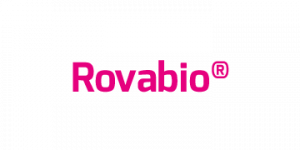


The European Union* has just granted Rovabio® Excel, the Non Starch Polysaccharide enzyme of Adisseo, the authorization for use in sows, from one week before farrowing to weaning. Employing Rovabio® Excel (the versatile enzyme) in lactating sows diets leads to a decreased loss of body weight, backfat and better feed intake during lactation. With an estimated return on investment between 20:1 to 40:1, depending on swine prices, Rovabio® Excel is a valuable new tool to benefit the swine industry, constantly operating with tight profit margins.
A meta-analysis was conducted, involving 6 trials, 640 sows run at various university locations all over the world. This meta-analysis demonstrated an average reduction of 3 kg (more than 20 %) of body weight loss of sows receiving a standard diet including Rovabio® Excel across a wide range of environmental and housing conditions, diet formulations and breeds. Similar results were obtained in high NSP diets (wheat, barley) and low NSP diets (corn) Fig 1)
Figure 1: Results of 6 trials in the world. Body weight losses during lactation
Body loss of sows during lactation is a key indicator used to anticipate the impact on subsequent sow prolificity, longevity and length of weaning to estrus interval. A trial performed at the Prairie Swine Center (Canada) with lactating sows confirmed the interest of using an NSP enzyme in the lactating sow’s diet. There was a reduction in weight loss during lactation (-1.7 kg) and backfat loss after weaning (-0.5 mm).
The positive effect was more important on first parity, which would be expected to have a positive impact on future reproductive performance of sows and productive longevity in the herd. These results are the consequence of two mechanisms. First, Rovabio® Excel, the versatile enzyme, leads to a better digestibility of main raw materials of the diet. Furthermore the Adisseo enzyme leads to greater feed intake during the lactation period (+ 7 kg). As a consequence of these two benefits on sow nutrition, individual weight of piglets and litter weight at weaning are both increased when sows receive a diet with Rovabio® Excel. : 6.47 kg vs 6.23 kg, and 67.3 kg vs 62.3 kg respectively.
For the nutritionist who has to deal with the challenge of the higher and higher nutritional requirements of hyper prolific sows with a limited feed intake capacity, Rovabio® appears to be a helpful tool for the formulation of consistent higher energy diets for lactating sows. Furthermore, if an increase of 240 g of piglet weight at weaning -as obtained in Prairie Swine Center trial -, would lead to an extra body weight at slaughter between 0.6 kg to 1.0 kg, eq 0.5 to 0.8 kg of carcass weight in field conditions, thus the calculated benefit of using Rovabio® would approximate 15 to 28 euros per sow per year (on the basis of French results (G3T/GTE 2013) 23 pigs produced sow/year, with a sine price from 1.3€ to 1.5€/ Kg). With a cost of use of only 0.75 euros/ sow/ year for the producer, this single advantage leads to an estimated return on investment between 20:1 to 40:1.
Table 1: Synthesis of technical results, Prairie Swine Center, Canada
With this new registration, Rovabio® Excel confirms its leading position as the versatile enzyme of choice. It is the only enzyme available on the market with a recommended single dosage for all diets, and is approved for all poultry, piglets (weaned), fattening pigs and now sows from one week before farrowing to weaning.
* COMMISSION REGULATION (EU) No 1138/2014